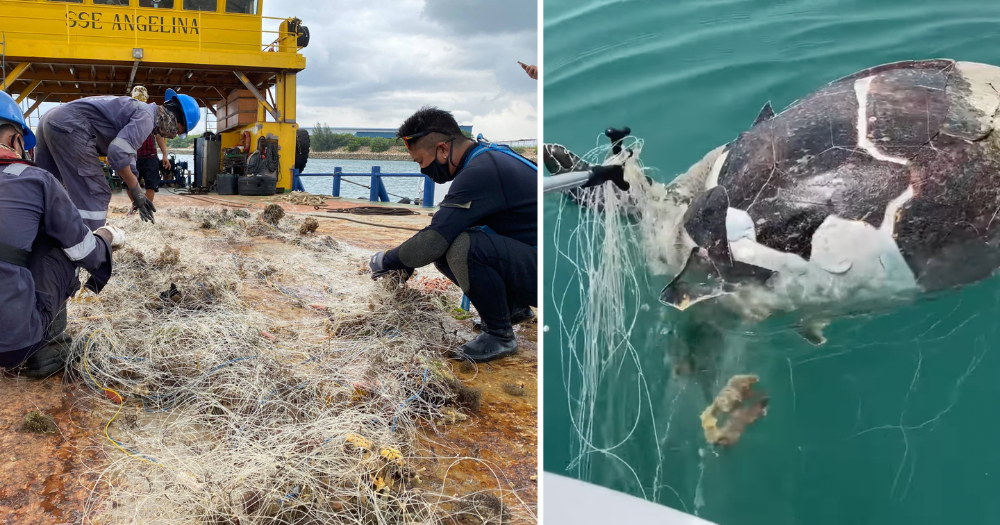Stories of a sea turtle that drowned after getting trapped in a gill net on the seabed near Pulau Hantu circulated on social media recently.
Since then, the government and local marine community have worked together to successfully remove the net, so it will endanger no marine creatures any longer.
Team effort
Removing the gill net was no easy feat.
When a dead sea turtle, with its head severed by the net, was found entangled within on May 15, a local diver attempted to remove the net himself.
However, the net is 100m long, 5m high and weighed down by anchors 15m deep on the seabed, and the diver was unable to pull it up.
Local community group Our Singapore Reefs subsequently worked with the Maritime and Port Authority of Singapore (MPA) in this endeavour, which Transport Minister S Iswaran shared about in a Facebook post on May 22.
Our Singapore Reefs told Mothership that MPA provided a patrol boat for support, and SSE Marine divers and boat crew then managed to winch the net out of the water after an arduous three hours.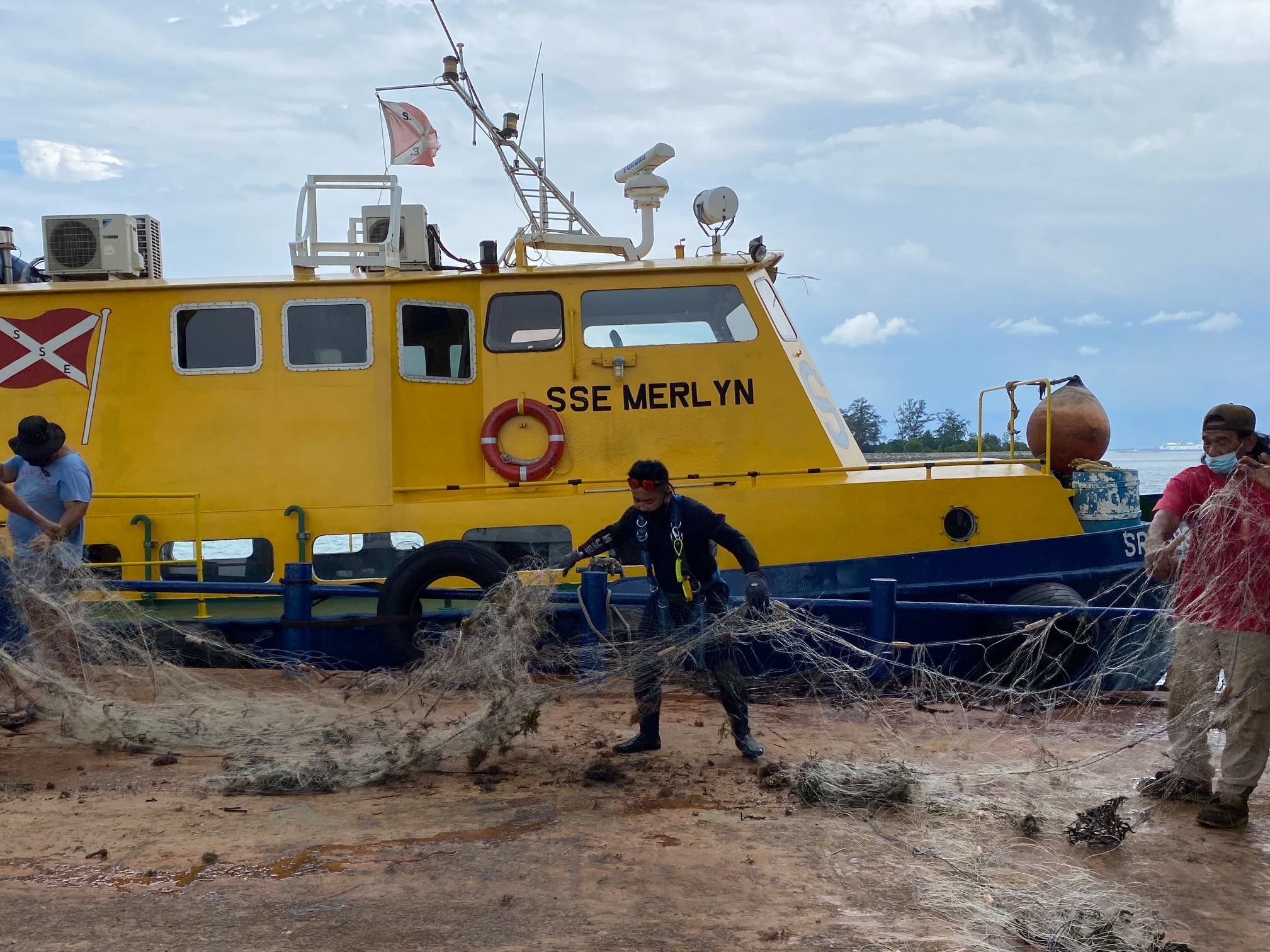 Photo from Our Singapore Reefs / FB
Photo from Our Singapore Reefs / FB
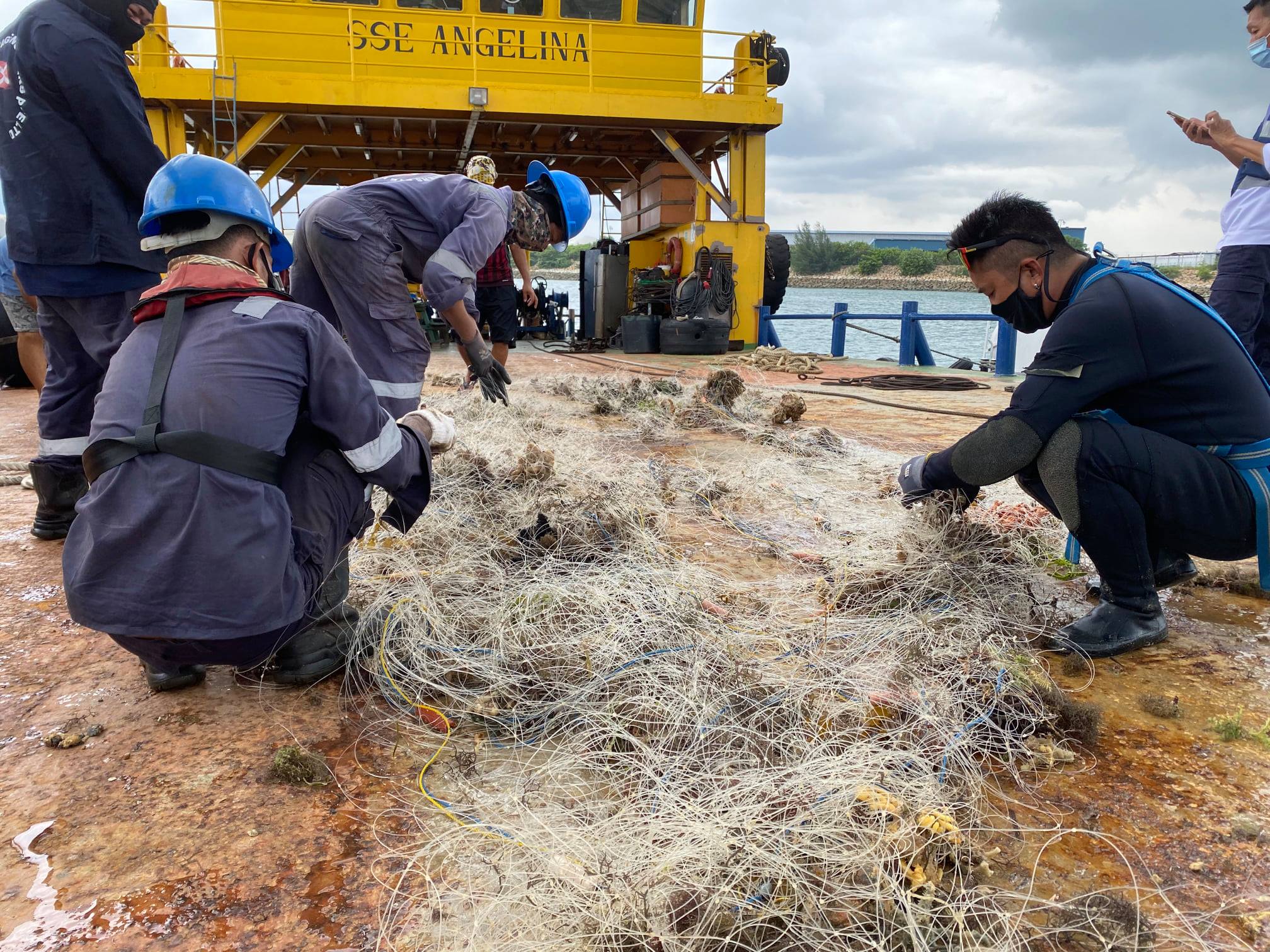 Photo from Our Singapore Reefs / FB
Photo from Our Singapore Reefs / FB
Practise responsible fishing habits
After the net was hauled ashore, various marine life was found trapped in it, including corals, sponges, crabs and feather stars.
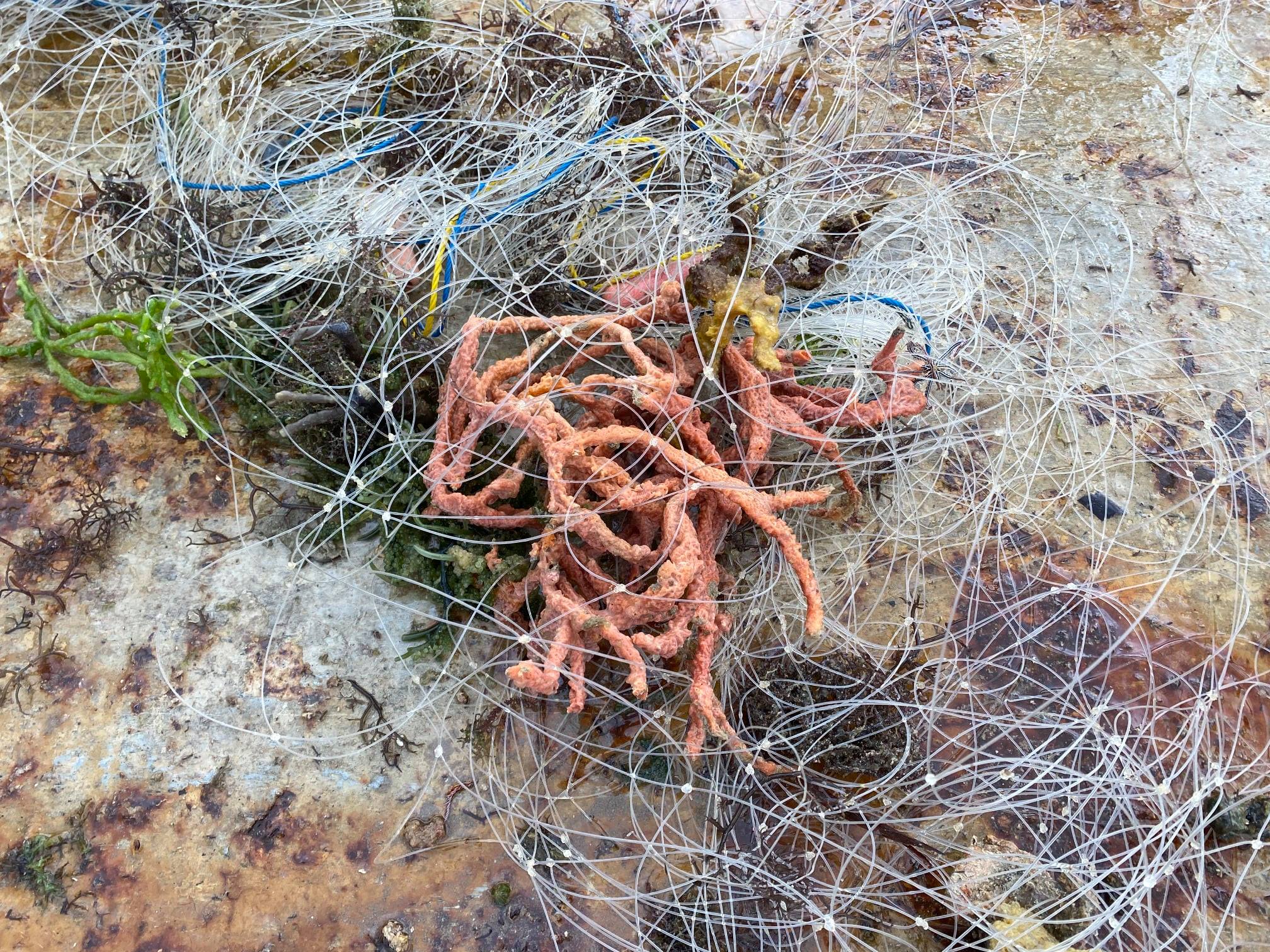 Photo from Our Singapore Reefs / FB
Photo from Our Singapore Reefs / FB
 Photo from Our Singapore Reefs / FB
Photo from Our Singapore Reefs / FB
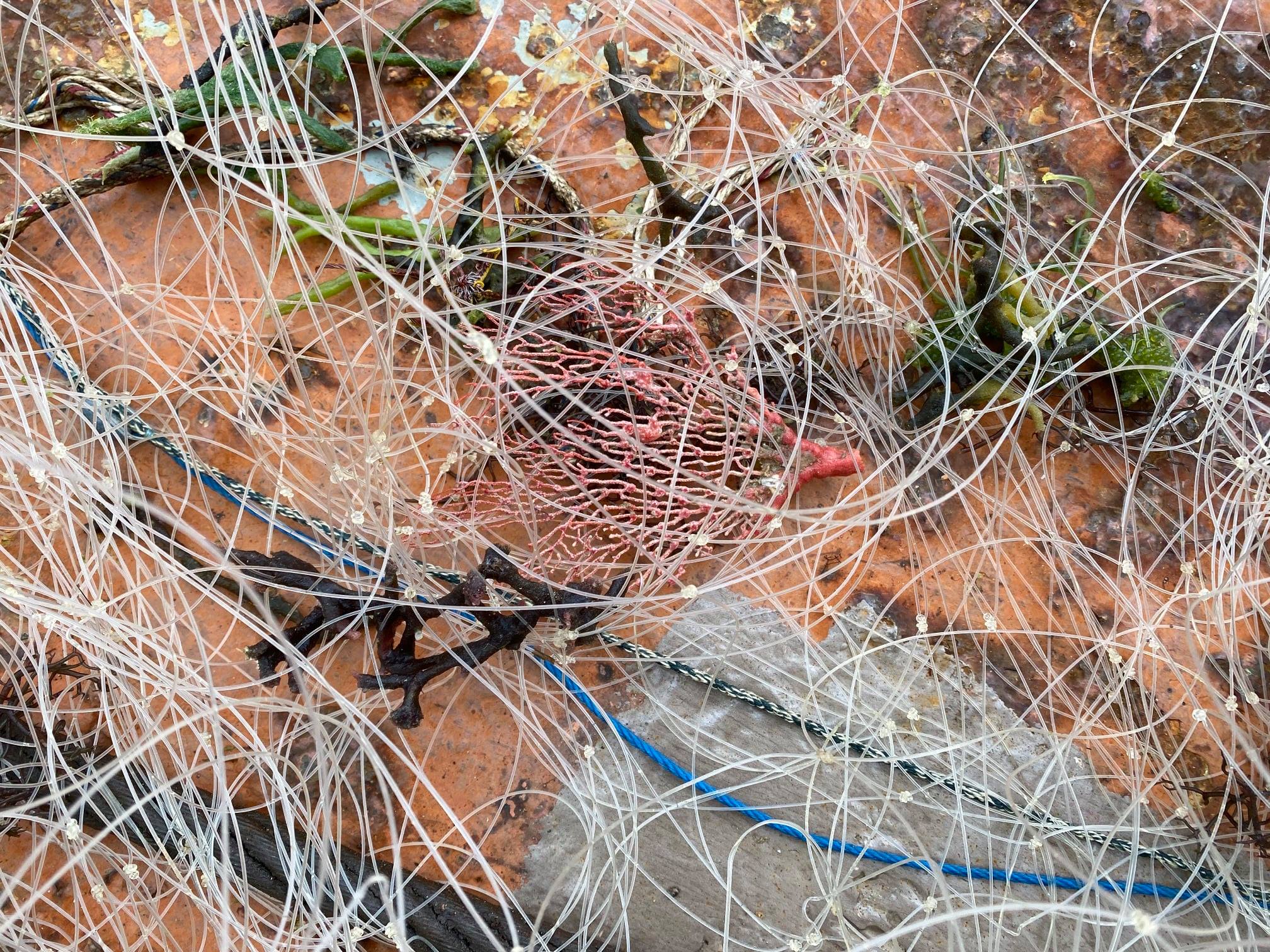 Photo from Our Singapore Reefs / FB
Photo from Our Singapore Reefs / FB
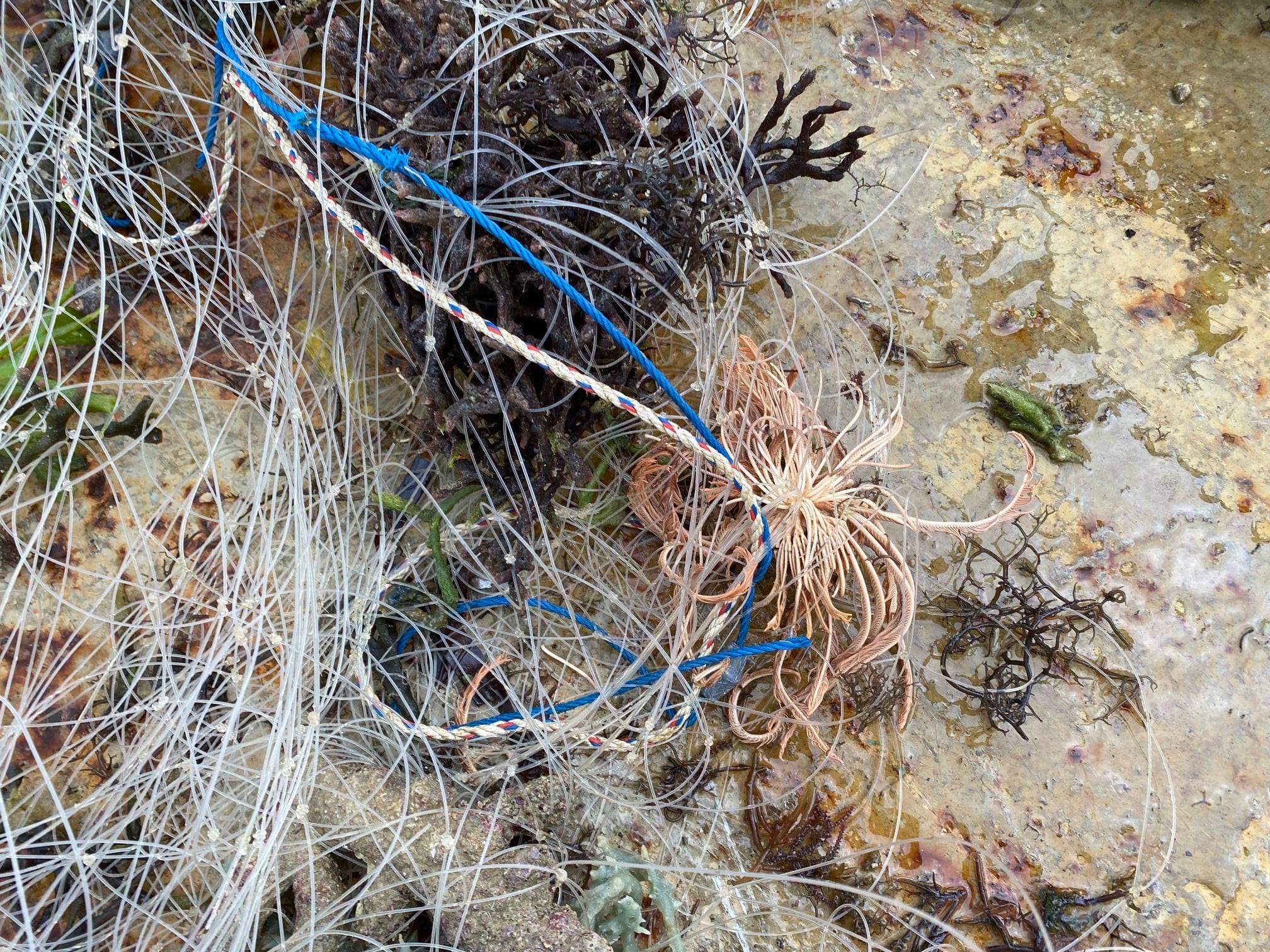 A feather star. Photo from Our Singapore Reefs / FB
A feather star. Photo from Our Singapore Reefs / FB
These creatures were freed from the net and later released back into the waters.
Abandoned nets such as these, also called ghost nets, can severely harm marine life. In the case of the sea turtle, it was unable to surface for air, and subsequently drowned, whereas other marine creatures entangled in the net can starve to death or die from its injuries while struggling to escape.
In a Facebook post, Our Singapore Reefs urged the marine and fishing community to practice responsible recreation and also to report and take photos of such incidents so that the necessary groups and authorities can take action for its removal.
The National Parks Board advises people to practise catch-and-release fishing, and to dispose of their used fishing gear such as nets, hooks, bait and fishing lines into the appropriate bins.
Turtle was a critically endangered Hawksbill turtle
The Hawksbill turtle was spotted by a group of people who were travelling to the island's coral reefs, and who initially believed that its carcass was two sea turtles mating.
Those onboard the boat later cut the turtle free and let its carcass drift away.
The Hawksbill turtle is a critically endangered and occasional visitor to Singapore's shores.
Female turtles often visit local beaches in search of proper nesting spots to lay their eggs.
This species is one of two species of marine turtles that can be found here, and the individuals may visit the same site to nest every few years, according to NParks.
Top photo from Our Singapore Reefs / FB and Singapore Marine Guide / FB
If you like what you read, follow us on Facebook, Instagram, Twitter and Telegram to get the latest updates.
